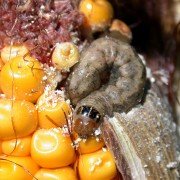Hasta la vista, meat; more pulses needed to feed hungry world
Call to reduce world meat consumption could benefit Canada’s pulse growers
By
Everyone from university professors to investment bankers and even Arnold Schwarzenegger are adding their voices to calls for reducing world meat consumption, in favour of a greater focus on plant-based proteins. As that sentiment mounts, it could bode well for Canada’s pea and lentil growers.
A group of investors representing US$1.25 trillion in assets is the latest voice calling for a shift away from meat-based diets towards a greater focus on plant-based protein. The investment group, linked through FAIRR (Farm Animal Investment Risk and Return) and ShareAction, sent a letter to more than a dozen global food companies, including Kraft Heinz and Nestle, highlighting the risks of an over-reliance on factory farmed livestock and the need to diversify into plant-based proteins.
A recent report from the Oxford Martin Programme on the Future of Food, published in April, expressed a similar sentiment, with the study focusing on both the environmental and health benefits to be gained from lowering the amount of animal-sourced foods in diets.
Even Arnold Schwarzenegger and James Cameron are campaigning in support of a Chinese government led initiative to reduce meat consumption by 50 per cent, under the tagline ‘Less Meat, Less Heat.’
“If this is what food companies and governments are also paying attention to, then, as primary agriculture, we need to understand where the strength and growth will be in the longer term,” said Gordon Bacon, CEO of Pulse Canada. “For many reasons, plant-based proteins are going to become a very important part of this dietary equation going forward,” he added.
“Food system transformation is something you hear a lot of people talk about,” said Bacon, but the question then becomes how the success of that transformation is measured. He said three key factors should be addressed: affordability, human health, and the health of the planet.
“All of us need to move away from a commodity-specific approach, and start looking at a more dietary approach. And that dietary approach has to improve our health and the health of the planet,” he said.
The Green Revolution of the 20th century, which saw large growth in global grain production through the introduction of new technologies and more fertilizer usage, focused on addressing caloric needs through cereal-based foods such as rice, corn and wheat. However, as people around the world grow more affluent, a shift away from plant-based proteins towards more meat, dairy and fish is also taking place.
From a human nutritional standpoint alone, Bacon said the growing rates of obesity and diabetes around the world made it hard to argue that the current path was the right one.
Plant-based carbohydrates still account for the bulk of the calories consumed worldwide. Plant-based proteins are more expensive than carbohydrates, but are still considerably cheaper compared to meat-based alternatives.
The key, according to Bacon, is not to change what people are eating, but rather to change the composition of the things they are already eating. “It’s about the complementary nature of pulses in a diet.”
“We can make cereal-based foods better from a nutritional basis by incorporating and reformulating traditional cereal based foods to include plant proteins,” said Bacon.
“People can choose whatever they want to eat, but we need to start with a base of knowledge of what is appropriate to eat,” said Bacon, noting that in addition to nutrition, other parameters, such as land use, water use, and biodiversity are also important to the bigger equation.
Growing more of the same food, but more efficiently, “only gets us more rapidly to the endpoint which we already know doesn’t work,” said Bacon. “It can’t be just more of the same/more efficient. It’s time for a bit of a reset.
“If you talk about meeting sustainability targets, do we start with making farmers become more efficient, or do we change what consumers eat?” asked Bacon.
“My view is that farmers will have the biggest interest in being efficient from a sustainability perspective, because all the things that degrade from a sustainability perspective cost him or her money. They don’t go and spend money on fertilizer or diesel fuel or other things because they like to.”
The shift has to move from sustainable farming to sustainable consumption of food, and farmers will respond to a market signal for sustainable food ingredients, he said. “Consumers will drive what farmers grow… You have to have a market pull; you don’t start at the farm level.”
However, that shift may prove difficult.
“For it to go mainstream, you have to have the supply. And to have the supply, you have to have someone who will go out and create that,” said David Newman, a pulse broker with Commodius Trading in Victoria. “I just don’t see pulses getting out of the margins.”
While there’s a growing subset of North Americans choosing to eat less meat, the market is still very niche, he said. In addition, while the market is much larger in areas of the world where the traditional diet includes more pulses, those countries are also producing more for themselves.
“You can never escape the global-ness of it,” said Newman, noting major populations and major policy decisions are much more effective in creating wider change than small personal diet shifts. Such wider cultural shifts were possible, he said, but would take a considerable co-ordinated effort.
“In 1995, if you went to a grocery store and looked at the milk aisle, you probably wouldn’t see one container of soy milk, or almond milk, or cashew milk,” said Newman. “Go to the grocery store today and it’s half and half (dairy and non-dairy milk); that’s all plant-based protein.
“It’s more of a function of marketing and trends, and these things are cyclical and transient,” said Newman. “The question is, ‘How do you get it from the margins of society, to the centre?’”
The large food companies would be interested in creating homogenous products using plant-based proteins, but one key barrier Newman sees is the lack of a consistent product.
Soymilk, for example, is relatively easy to bring into the mainstream, as it is very easy to source soybeans. If there is a problem with the crop in one part of the world, it’s not hard to find soybeans from somewhere else. However, that’s not the case for crops such as peas, lentils, or chickpeas.
“To get it to the point where (plant-based protein) is consumed more widely you have to have that industrial layer, which we can’t do right now,” said Newman.
It’s also considerably easier for the North American sector to make a profit shipping pulses to countries like India, at least in the short term, than it is to go through the lengthy effort it would take to develop and market consistent ingredients for the North American food sector, he said.
Increased plant protein in the average diet implies a countermove toward less meat, which may also prove more theoretical than practical — at least in the foreseeable future.
“There will always be a demand for red meat, and there will always be a supply of it available, but it will be a dietary choice from the consumer, and the consumer will dictate how much we need,” said Rick Wright, a cattle buyer with Heartland Order Buying in Manitoba.
The North American cow herd was already considerably smaller than it was 20 years ago, but he felt the meat industry as a whole was still very solid as demand elsewhere in the world is rising.
Wright acknowledged the arguments some people have made that we should not be feeding grain to cattle to make food and should instead be feeding that grain directly to people, “but I don’t think we’ll see a big push to that in my lifetime.”
While there’s room for efficiencies and other improvements in the meat sector, there is also a sizeable amount of land that is not suitable for growing grain, as it is only suitable for grazing cattle, he said.
Source: Country Guide. Author: Phil Franz-Warkentin writes for Commodity News Service Canada, a Winnipeg company specializing in grain and commodity market reporting. Follow him at @PhilFW on Twitter.




